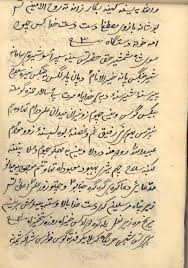.webp)
Amir Suhail Wani
In the quiet alleys of Srinagar and the candlelit gatherings of Muharram nights, the mournful cadence of Kashmiri marsiya — elegies that grieve the martyrdom of Imam Hussain — resonates like a heartbeat through time.
This poetry is not just an art form. It is a spiritual lifeline, a cultural relic, and a call to remember. For centuries, marsiya in the Kashmiri language has given voice to sorrow, courage, and unwavering faith. Rooted in Islamic tradition, and shaped by local sensibilities, this form of poetry has carved a profound niche in Kashmir's literary and religious landscape.
The origin of marsiya dates to the 7th century, following the Battle of Karbala—a defining moment in Islamic history. It became a poetic response to loss, justice, and resistance. While this tradition flourished in Arabic, Persian, and Urdu, it quietly found fertile ground in Kashmir through centuries of cultural exchange and religious devotion.
By the 16th century, under the influence of Persian culture and the growth of the Shia community in the region, marsiya began to appear in the Kashmiri language. At first, it was based on the Persian style. Over time, however, it adapted to local rhythms, metaphors, and emotional textures to become homegrown genre.
 A Marsiya majlis in Kashmir (Courtesy: Kashmir Observor)
A Marsiya majlis in Kashmir (Courtesy: Kashmir Observor)
The early Kashmiri marsiyas were elegant yet elite—composed in a Persianized Kashmiri that was often only understood by scholars or clerics. But by the 18th and 19th centuries, the genre embraced the vernacular. It became the language of the people.
Poets like Aga Syed Yousuf Al-Moosavi and Mirwaiz Shams-ud-Din became household names in religious circles. They crafted verses that were rich in emotion and imagery, drawing crowds during Muharram gatherings. Their poetry was more than lament—it was teaching, remembrance, and spiritual bonding.
Today, poets like Aga Syed Abid Hussain and others carry the torch forward, fusing tradition with modern themes while preserving the classical soul of marsiya.
What Makes Kashmiri Marsiya Unique?
Every Kashmiri marsiya centers on the tragedy of Karbala—highlighting sacrifice, grief, faith, and resistance. These poems immortalize the bravery of Imam Hussain, the pain of his companions, and the suffering of the Prophet’s family.
Typically organized in stanzas (often in six-line musaddas form), a marsiya begins with a spiritual invocation, narrates the events of Karbala, and culminates in a heart-wrenching lament. It's not uncommon for local folk forms like wanwun or noha to shape their delivery, making the poetry even more accessible and powerful.
Unlike quiet readings, marsiyas are performed—with rhythm, weeping pauses, and communal chants. The poetry breathes in the collective emotion of the majalis (gatherings), often accompanied by ritual chest-beating (matam), especially during Muharram.

Much of this poetry lives not in books but in the hearts and voices of devotees. Passed down through generations—especially among women in private mourning circles—marsiya has become a living, breathing oral tradition. For many, these verses were their first lessons in religion, morality, and history.
A Marsiya manuscript
Even as modern Kashmiri faces linguistic shifts—with youth leaning toward Urdu and English—the emotional power of marsiya ensures its survival. In the villages of Budgam or the by-lanes of Zadibal, the poetic echoes of Karbala still ring clear.
Modern Media, Ancient Message
Digital platforms have given a second life to marsiya poetry. WhatsApp groups, YouTube channels, and Instagram reels now host videos of Kashmiri marsiya recitations, attracting both local audiences and diaspora communities. Youth are remixing traditional tunes with contemporary music, while older generations ensure authenticity isn’t lost in the wave.
Cultural organizations and scholars are also stepping in, compiling and publishing marsiyas in printed anthologies and audio archives to protect them from fading into obscurity.
Why Marsiya Matters
In Kashmir, marsiya isn’t just about mourning the past. It is about understanding resistance, valuing sacrifice, and nurturing identity in a world of rapid change. It teaches empathy, connects generations, and strengthens communal bonds through shared grief and hope.
As long as the story of Karbala is remembered, the marsiya—in any language, and especially in the lyrical soul of Kashmiri—will remain not just relevant, but essential.
Aga Syed Nasir Rizvi, cultural historian and marsiya performer told this author, “Each verse of a Kashmiri marsiya is a cry, a prayer, and a promise—all in one.”
Zahra Bano, college student from Srinagar said, “When my grandmother recites marsiya, it’s like the pain of Karbala is happening in front of us.”
ALSO READ: Ghulam Nabi Tantray- a visionary educationist from Bandipora
Kashmiri marsiya is more than poetry. It is memory. It is resistance. It is beauty born from grief. In a land known for its mysticism and resilience, this elegiac tradition stands tall; as a bridge connecting the past and present, language and faith, silence and expression.
